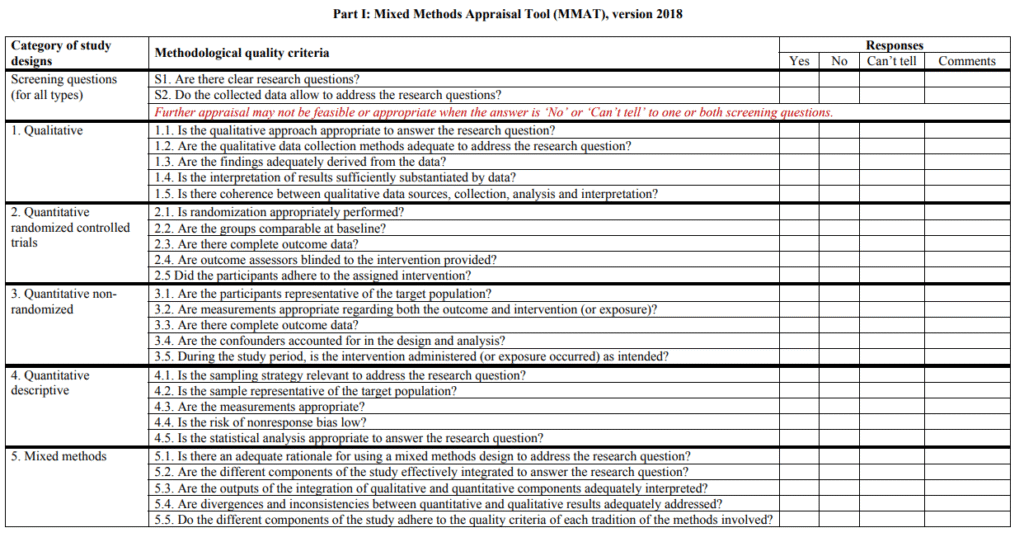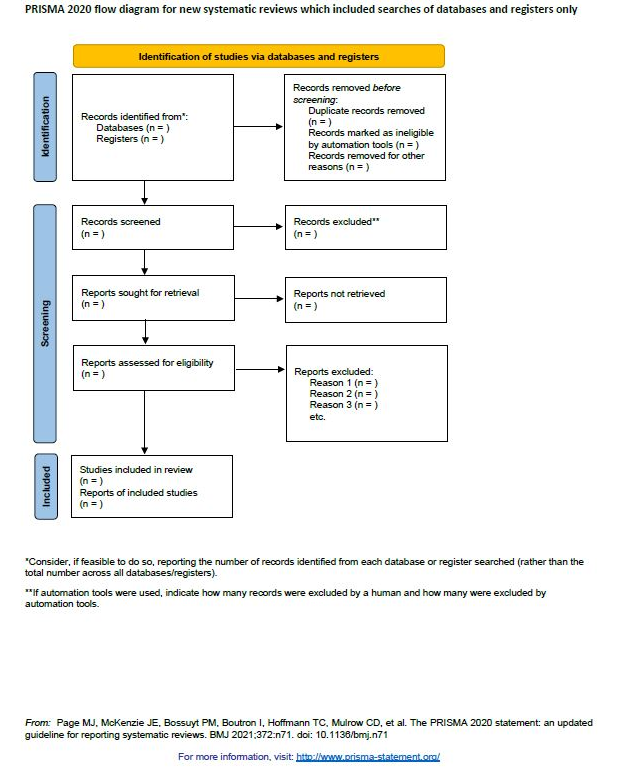
Thesis Template Example – Literature Review Paper Sample
A literature review paper (in master or PhD dissertation and theses papers) involves in-depth academic research on a specific topic, presenting a clear argument or analysis supported by credible sources. The thesis includes sections like an introduction, methodology, findings, and conclusion, while a literature review summarizes and evaluates existing research to highlight gaps or trends. Both require critical thinking, strong organization, and original writing.
This template is designed as a guide for conducting a systematic literature review on the effectiveness of physical exercise in managing ADHD symptoms in children, based on the structure and content of the preceding sections.
1. Cover Page
- Title: A Systematic Literature Review of the Effectiveness of Physical Exercise in Managing ADHD Symptoms in Children
- Your Name/ID
- Word Count: [To be completed]
- Module Code: [Insert Module Code]
2. Abstract (150–300 words)
- What the project is about: Briefly state the topic (effectiveness of physical exercise for ADHD symptoms in children) and the population (children with ADHD).
- Why it matters: Highlight the rationale and the gap in current literature regarding this topic.
- What you did: Specify the type of review (systematic literature review) and briefly mention the methods used (e.g., databases searched, inclusion/exclusion criteria).
- Key findings: Summarize the main themes or outcomes identified from the reviewed studies.
- Recommendations: Briefly state the recommendations for practice and/or future research.
- Keywords: List 3-5 relevant keywords (e.g., ADHD, physical exercise, children, systematic review, executive function).
3. Table of Contents
- Include all chapters, subheadings, tables, figures (e.g., PRISMA flowchart), appendices, and the reference list with accurate page numbers.
4. Chapter 1 – Background
- 1.1 Background: Provide an overview of Attention-Deficit/Hyperactivity Disorder (ADHD) in children, including prevalence, core symptoms (inattention, hyperactivity, impulsivity), and associated challenges (e.g., executive function deficits).
- 1.2 Rationale: Explain why this topic is relevant and important. Discuss the limitations of existing treatments (e.g., medication side effects, adherence issues with behavioral therapies) and the potential role of physical exercise as a complementary or alternative approach.
- 1.3 Gap in Knowledge: Identify what is missing or unclear in the current literature regarding the effectiveness of physical exercise for managing ADHD symptoms in children. This could include inconsistencies in findings, lack of specific evidence for certain types of exercise or symptom domains, or limited understanding of underlying mechanisms.
- 1.4 The Problem: Clearly state the issue that your literature review aims to address. This should be linked to the identified gap in knowledge.
- 1.5 Aim and Objectives:
- 1.5.1 Aim: State the overarching aim of your systematic literature review (e.g., To evaluate the effectiveness of physical exercise interventions in managing core symptoms and associated executive function deficits in children diagnosed with ADHD).
- 1.5.2 Objectives: List 3-5 specific, measurable, achievable, relevant, and time-bound objectives that will help you achieve your aim. Examples include:
- Systematically identify and synthesize primary research studies.
- Examine the impact of different types and characteristics of physical exercise interventions.
- Assess the methodological quality of included studies.
- Explore potential moderators of the relationship.
- Identify outcome-specific effects of physical exercise.
- 1.6 Contribution to Knowledge: Explain what your review could add to the field. This might include providing a clearer synthesis of existing evidence, identifying gaps for future research, or informing clinical practice.
5. Chapter 2 – Methodology
- 2.1 Methodology: Clearly state the type of review (e.g., systematic literature review) and provide a rationale for this choice, highlighting its strengths in providing a comprehensive and unbiased synthesis of evidence. Mention the guiding framework used for the review process (e.g., SPIDER framework adapted for intervention studies).
- 2.2 Search Strategy: Detail the electronic databases searched (e.g., MEDLINE, PsycINFO, ERIC, Web of Science, Scopus, CINAHL).
- 2.3 Keywords: List the keywords and search terms used for each database, explaining how these were chosen to capture relevant literature (e.g., combinations of “ADHD,” “physical exercise,” “children,” “intervention,” “symptoms,” “executive function”). Mention the use of Boolean operators (AND, OR).
- 2.4 Inclusion/Exclusion Criteria: Clearly list the predefined criteria used to determine which studies were included in the review and which were excluded. Provide a rationale for each criterion. Examples:
- Inclusion:
- Participants aged 6-18 years diagnosed with ADHD using established criteria (DSM-5-TR or ICD-11).
- Studies investigating physical exercise interventions as a primary intervention.
- Studies reporting on core ADHD symptoms (inattention, hyperactivity, impulsivity) and/or executive function outcomes.
- Peer-reviewed primary research articles.
- Published between [Start Year] and [End Year].
- Written in English.
- Exclusion:
- Studies focusing solely on pharmacological or other non-exercise interventions.
- Studies with participants with significant comorbid conditions that might confound the results (specify).
- Reviews, meta-analyses, case studies, and conference abstracts.
- Inclusion:
- 2.5 Account of the Search: Describe the process of conducting the search, including the date the searches were conducted (establish a cut-off point), how the search protocol was developed and followed, and how the search results were managed (e.g., using Zotero for organization and de-duplication). Provide a table showing the number of records retrieved from each database before de-duplication. Explain any variations in the number of records retrieved across databases. Detail the subsequent steps of screening titles, abstracts, and full-text articles against the inclusion/exclusion criteria, and the number of studies excluded at each stage.
- Include a PRISMA Flowchart: Visually represent the study selection process, starting with the initial search results, through screening and eligibility stages, to the final number of included studies (ideally 8-12 for this scope). Include the number of records identified, screened, deemed ineligible, and included at each step.
- 2.6 Tables:
- Table 1: Study Characteristics: Present a table summarizing the key characteristics of the included studies (8-12). Include columns for:
- Author(s) and Year of Publication
- Country of Study
- Methodology/Study Design (e.g., RCT, quasi-experimental)
- Participant Sample Size (and age range)
- Type of Physical Exercise Intervention (and key characteristics like duration, frequency, intensity if reported)
- Control Group (if applicable)
- ADHD Diagnostic Criteria Used
- Table 2: Findings: Present a table summarizing the key findings related to the impact of physical exercise on core ADHD symptoms and executive function outcomes in each included study. Include columns for:
- Author(s) and Year
- ADHD Symptoms Measured (and tools used)
- Executive Function Outcomes Measured (and tools used)
- Key Findings Related to Exercise Intervention (including effect sizes or statistical significance where reported)
- Table 1: Study Characteristics: Present a table summarizing the key characteristics of the included studies (8-12). Include columns for:
- 2.7 Critical Appraisal: Describe the critical appraisal tool used (e.g., MMAT – Mixed Methods Appraisal Tool) and explain why this tool was chosen for the types of studies included. Present a summary of the methodological quality of each included study, highlighting strengths and weaknesses based on the chosen appraisal tool. This could be presented in a table format or as a narrative summary for each study or across key methodological domains.
MMAT diagram example

Example Prisma Flowchart

- 2.8 Ethics: Discuss the ethical principles evident (or lacking) in the research studies you reviewed. Consider principles such as informed consent and assent, minimizing harm and maximizing benefit, confidentiality and privacy, and justice in participant selection. Provide examples from the reviewed studies to support your discussion.
6. Chapter 3 – Findings
- Introduction: Briefly explain how the themes were developed from the synthesized data (e.g., through inductive analysis, identifying recurring patterns and relationships in the findings of the included studies).
- Theme 1: [Descriptive Theme Title]: Present the first key theme that emerged from your analysis of the 8-12 studies. Provide supporting evidence from multiple studies to illustrate this theme. Be analytical by explaining why these findings might be occurring and how they relate to the research question.
- Theme 2: [Descriptive Theme Title]: Present the second key theme, following the same structure as Theme 1.
- Theme 3: [Descriptive Theme Title]: Present the third key theme. Aim for 3-5 themes with roughly equal depth of analysis.
- Theme 4 (Optional): [Descriptive Theme Title]:
- Theme 5 (Optional): [Descriptive Theme Title]:
- Emerging Synthesis: Discuss how the findings across the different themes fit together. What overall picture is emerging regarding the effectiveness of physical exercise for managing ADHD symptoms in children based on your review? Highlight any consistent patterns, contradictions, or nuances in the findings.
7. Chapter 4 – Discussion, Limitations, Conclusions, Recommendations
- 4.1 Discussion: Relate your findings back to the wider literature and context discussed in Chapter 1. Compare and contrast your findings with existing research. Explain the implications of your findings for the current understanding of ADHD management.
- 4.2 Aim & Objectives – Were They Met?: Systematically address each of your stated aim and objectives from Chapter 1. Provide a clear statement of whether each was fully met, partially met, or not met based on the work you have conducted. Justify your assessment with evidence from the preceding chapters.
- 4.3 Limitations – In the Studies and in Your Own Process: Critically reflect on the limitations of the primary studies included in your review (as identified in your critical appraisal in Chapter 2) and the limitations inherent in your own systematic review process (e.g., search strategy limitations, potential for bias in selection and data extraction, qualitative synthesis).
- 4.4 Conclusions: Provide a short and clear summary (2-3 paragraphs) of the main findings of your systematic literature review. Reiterate the key takeaways regarding the effectiveness of physical exercise for ADHD symptoms in children.
- 4.5 Recommendations for Practice: Based on your findings and their implications, suggest practical changes that could be implemented in real-world settings such as schools, CAMHS, and community programs to better support children with ADHD. Ensure your recommendations are evidence-based and consider feasibility and clinical relevance.
- 4.6 Recommendations for Research: Identify specific gaps in the current research that need to be addressed in future studies. These recommendations should logically flow from the limitations you identified and the questions that remain unanswered by the existing literature.
8. Reference List
- Start on a new page.
- Include a comprehensive list of all sources cited in your thesis, following the Harvard (Cite Them Right) referencing style consistently.
9. Appendices (Optional)
- Include any supplementary materials, such as full search strings used for each database, detailed critical appraisal tables, or other relevant information that supports your methodology or findings.
This template provides a comprehensive structure for your systematic literature review. Remember to write in a clear, formal, and analytical style, using evidence from your reviewed studies to support your claims and demonstrating critical thinking throughout.
The above is just a sample, if you wish to order a custom thesis paper in any subject, please click the button below to learn more about our services.
Best Literature Review Topics to Write and Research
| Course | Top Literature Review Topics |
|---|---|
| Psychology | – Effects of childhood trauma on adult mental health – Cognitive behavioral therapy outcomes – Social media and adolescent anxiety – Emotional intelligence in leadership – PTSD in frontline healthcare workers |
| Economics | – Impact of globalization on income inequality – Behavioral economics in daily decision-making – Digital currencies and market stability – Economic implications of universal basic income – Taxation and economic growth |
| Human Resource Management | – Employee retention in hybrid workplaces – Transformational leadership and team performance – Impact of remote work on productivity – Talent management in competitive industries – Workplace diversity and cultural competence |
| Philosophy | – Ethics of artificial intelligence – The concept of justice in modern society – Moral relativism vs moral absolutism – Free will and determinism – The philosophy of happiness |
| Finance | – Role of fintech in global banking – Cryptocurrency volatility and investor behavior – Financial risk management during economic downturns – Ethical investing and ESG metrics – Portfolio diversification strategies |
| Microeconomics | – Price elasticity in the digital age – Market structures and consumer welfare – Behavioral insights in pricing models – Resource allocation in health systems – Supply chain economics |
| Macroeconomics | – Fiscal policy and economic stimulus effects – Inflation and consumer confidence – Government debt and future growth – Unemployment trends and economic cycles – Central bank digital currencies |
| Project Management | – Agile methodology in software development – Risk analysis in construction projects – Stakeholder influence on project outcomes – Time management tools and effectiveness – Cost control in long-term projects |
| Health Science | – Impact of lifestyle on chronic disease – Effectiveness of public health campaigns – Nutrition and immunity – Preventive health care in aging populations – Mental health stigma and outreach efforts |
| Nursing | – Burnout among ICU nurses – Evidence-based practice in pain management – Communication in end-of-life care – Role of nurses in patient advocacy – Cultural sensitivity in nursing care |
| Biochemistry | – Role of enzymes in metabolic diseases – Protein misfolding and Alzheimer’s disease – DNA repair mechanisms and cancer – Hormonal regulation of metabolism – Biochemical impact of environmental toxins |
| Education | – Online learning and academic performance – Inclusive education for students with disabilities – The role of teacher feedback in learning – Curriculum innovation in STEM education – Gamification in the classroom |
| Marketing | – Social media influencers and consumer behavior – Branding strategies for startups – Digital marketing effectiveness – Consumer trust in e-commerce – Neuromarketing and decision-making |
| Information Technology | – Cybersecurity trends and challenges – Blockchain applications beyond cryptocurrency – AI in customer service – Big data in predictive analytics – Internet of Things (IoT) in smart cities |
| Law | – Cyber law and data protection – Human rights and global policy – Criminal justice reforms – Environmental law enforcement – Intellectual property in the digital age |
If you’re asking, “Can I pay someone to do my thesis paper or literature review for me?” — the answer is yes. Coursepivot.com is the best assignment help website to buy a custom thesis paper online from top academic experts. Whether you need a full thesis, a single chapter, or a detailed literature review, Coursepivot delivers original, AI-free, and affordable content tailored to your exact academic requirements.
Cite this article
You can copy and paste your preferred citation format below.
Martin, L. & Arquette, E.. (2025, May 7). Thesis Template Example – Literature Review Paper Sample. Coursepivot.com. https://coursepivot.com/blog/literature-review-paper-sample-master/



